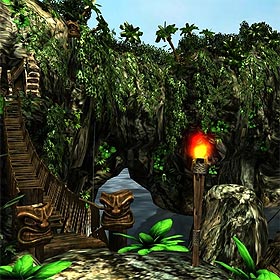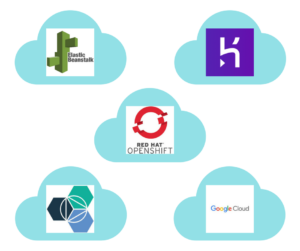Google Offers 3D Rendering in the Browser
 Google has released a new experimental browser plugin that makes it possible to display and animate detailed graphical 3D objects and environments directly in the browser.
Google has released a new experimental browser plugin that makes it possible to display and animate detailed graphical 3D objects and environments directly in the browser.
3D browser-based technologies appear to be on the rise. Mozilla are working on a similar 3D plugin project and ID Software recently released Quake Live, a web-based version of their ground-breaking game.
Google’s project provides an additional approach and the company hopes that applications such as Google Earth will eventually run directly from the web. Their open-source cross-browser plugin directly utilizes hardware-accelerated rendering. Developers can import 3D objects using the open-standard COLLADA format which is supported by SketchUp, 3ds Max, and Maya. Those objects can then be manipulated using a JavaScript API.
Although this offers another 3D technology, Google admits that a standardized 3D web API is likely to be several years away and developers should only use O3D for experimentation at this early stage. However, they suspect O3D and the Mozilla Canvas 3D extension could eventually converge to create a single unified platform.
3D déjà vu?
Browser-based 3D is not new. In the mid-1990’s, VRML (Virtual Reality Modeling Language) was heralded as being the next big thing on the web, but the technology never became as widespread as expected.
Developing 3D applications is not easy, but perhaps these projects will highlight the potential of a 3D web environment? It is another matter whether web users can see the benefits and are ready to make the leap from 2D.
Links:
Will you try experimenting with 3D web development? Could your web application make use of the technology?
Frequently Asked Questions about Google’s 3D Browser Plugin
How does Google’s 3D browser plugin compare to other 3D software like SketchUp?
Google’s 3D browser plugin is a powerful tool that allows users to view 3D content directly in their web browser. Unlike SketchUp, which is a standalone software that needs to be downloaded and installed, Google’s 3D browser plugin is lightweight and doesn’t require any installation. However, SketchUp offers more advanced features and is more suitable for professional 3D modeling.
Can I use Google’s 3D browser plugin to create 3D models like in BabylonJS?
Google’s 3D browser plugin is primarily designed for viewing 3D content, not creating it. If you’re looking to create 3D models, you might want to consider using a dedicated 3D modeling software like BabylonJS or Clara.io. These platforms offer a wide range of tools and features for creating and editing 3D models.
How does Google’s 3D browser plugin integrate with Google Maps?
Google’s 3D browser plugin can be used to view 3D content on Google Maps. This can provide a more immersive and realistic experience when exploring different locations. However, the plugin doesn’t allow you to create or edit 3D content on Google Maps.
Can I use Google’s 3D browser plugin on any website?
Google’s 3D browser plugin can be used on any website that supports it. However, the website needs to have the necessary 3D content for the plugin to display. If the website doesn’t support the plugin or doesn’t have any 3D content, the plugin won’t be able to function.
How does Google’s 3D browser plugin compare to Vectary’s 3D plugin?
Both Google’s 3D browser plugin and Vectary’s 3D plugin allow users to view 3D content in their web browser. However, Vectary’s plugin also allows users to create and edit 3D models directly in their browser, which Google’s plugin doesn’t offer.
Is Google’s 3D browser plugin free to use?
Yes, Google’s 3D browser plugin is free to use. However, keep in mind that the plugin is primarily designed for viewing 3D content, not creating it.
Do I need any special hardware to use Google’s 3D browser plugin?
No, you don’t need any special hardware to use Google’s 3D browser plugin. As long as your computer and web browser meet the minimum requirements, you should be able to use the plugin without any issues.
Can I use Google’s 3D browser plugin on mobile devices?
Currently, Google’s 3D browser plugin is only available for desktop browsers. It’s not compatible with mobile browsers.
How do I install Google’s 3D browser plugin?
To install Google’s 3D browser plugin, you simply need to visit the plugin’s download page and follow the on-screen instructions. The installation process is straightforward and doesn’t require any technical knowledge.
What types of 3D content can I view with Google’s 3D browser plugin?
You can use Google’s 3D browser plugin to view a wide range of 3D content, including 3D models, animations, and virtual reality experiences. However, the specific types of 3D content you can view will depend on the website you’re visiting.
Craig is a freelance UK web consultant who built his first page for IE2.0 in 1995. Since that time he's been advocating standards, accessibility, and best-practice HTML5 techniques. He's created enterprise specifications, websites and online applications for companies and organisations including the UK Parliament, the European Parliament, the Department of Energy & Climate Change, Microsoft, and more. He's written more than 1,000 articles for SitePoint and you can find him @craigbuckler.





